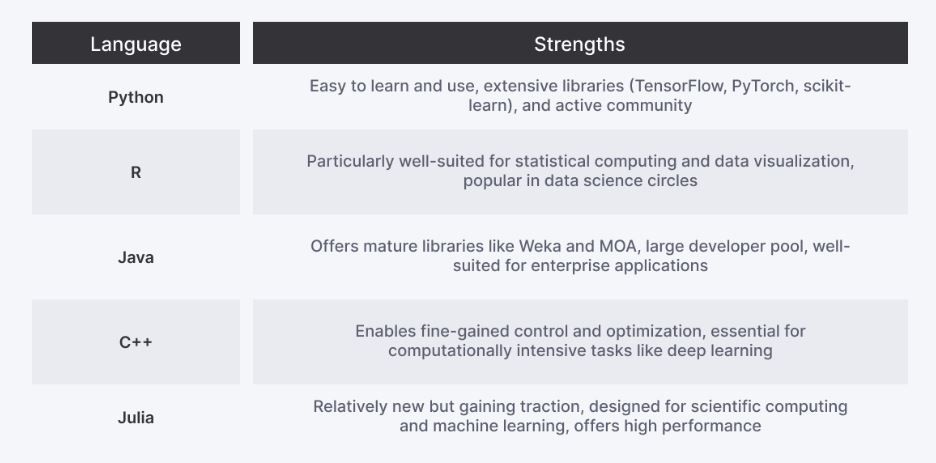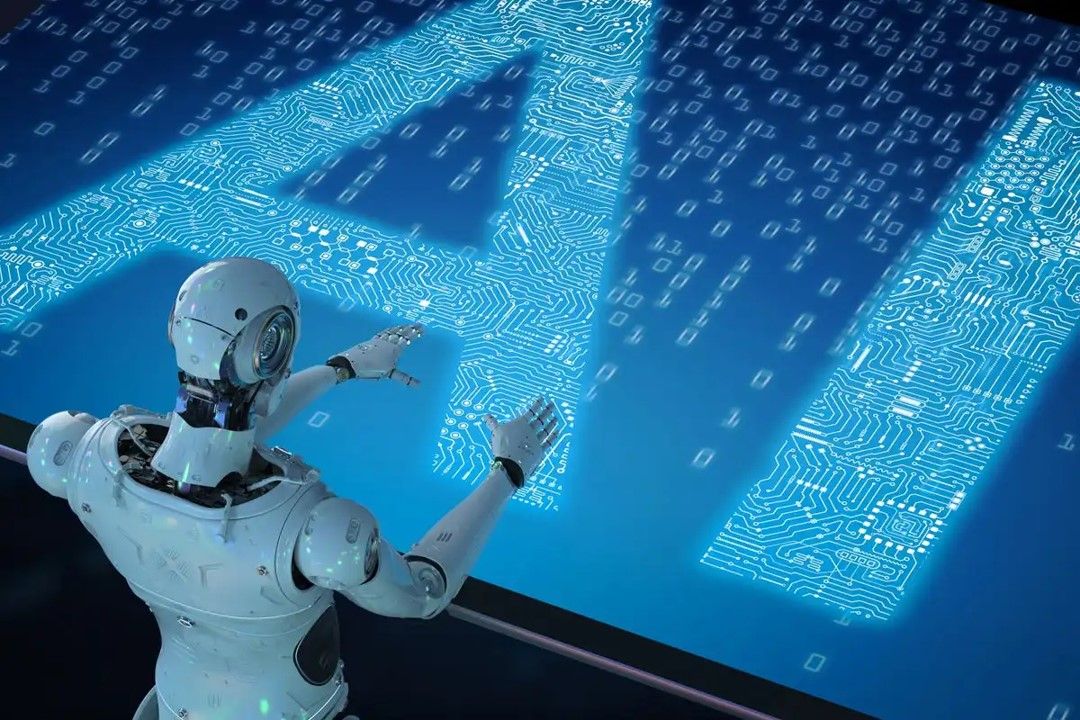AI programming can be described as the developmental process of designing both intelligent machines and systems. This is the process of creating models, providing information, and then building models to make machines intelligent enough to perform tasks that need involvement of human intelligence. It is through programming languages that programmers put these algorithmic and structural instructions in the format that will be understandable by AI Systems to learn, reason and solve problems.
Key characteristics of AI programming:
- Machine Learning (ML) Focus: AI programming makes an extensive use of machine learning that creates liberty to the machines to learn out of raw inputs.
- Data-Centric Approach: Machine learning which is a subset of AI evidently needs the presence of big data. These datasets are used in training the machine learning models, as well as tuning these models to precision; in a way, data becomes a fundamental component in AI programming.
- Iterative Process: As a result, there are many considerations of the integration of AI solutions that must be cyclical in nature. Developers have to check the algorithm with the given model on the test data set and improve it each time.
AI Programming Languages: Definition and Role
AI programming languages are application specific, that is, they are languages that are specifically used in the development of AI apps. These languages offer specific features and capabilities to tackle specific operations such as data analysis, model building, and the deployment of algorithms.
Here's a breakdown of the essential role programming languages play in AI development:
- Algorithm Design and Implementation: Programs that compute are written in languages that offer the framework that a programmer needs to write out an AI algorithm. These are the set of instructions, which is used by the machine learning model during its learning phase and when inferring results.
- Data Handling and Manipulation: Preprocessing of data is another vital stage of AI development that involves three key activities, namely extraction, cleaning, and transformation of data. There are packages in programming languages provided to handle data for analysis and mainly to train models and these are termed as data munging tools.
- Machine Learning Library Integration: There is usually a rich set of machine learning libraries bundled in most of the popular AI programming languages. Here, they offer ready-made solution functions and modules for implementation of most frequently used machine learning tasks like classification, regression, and dimensionality reduction. If these libraries are employed, programmers can greatly improve the development time.
- Model Training and Evaluation: Programming languages act as the platform in which machine learning models are trained as well as tested. This makes it possible for programmers to write code that partitions data into three different sets that include training sets, validation sets and test sets, to then develop the models with the training data, and evaluate the models performance and effectiveness on the validation and test data.
Choosing the Right Language for AI Projects
Like most things in computer science, there isn’t a clear cut reply, however, there are, arguably, some significant languages in AI. The most suitable language for a project depends on various factors, including:
Project Requirements: Language preference will also be influenced by the specific task of the AI system that is to be applied (Computer Vision, NLP, Robotics).
Team Expertise: For real-world problems, it is essential to consider some experiences of the teams already developed in different programming languages.
Availability of Libraries and Frameworks: Importantly, there should be reliable libraries and frameworks to have concepts taught for artificial intelligence in the environment of a programming language; otherwise, the performance can be significantly improved.

Apart from languages discussed above, several other choices are available depending on the needed AI development. Some examples include:
- Scala for large scale machine learning;
- JavaScript for browser applications of Artificial Intelligence;
- Prolog for symbolic reasoning used in expert systems.
It is important to note that the field of the programming languages used in AI also constantly develops. New languages are appearing and the once existing ones, new versions are created with additional features and options. It is important for developers to always update themselves in these developments so that they may take advantage of the latest developments in AI.



